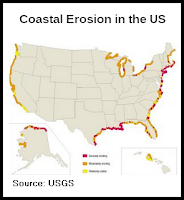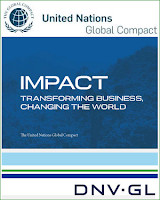While swimming is a common summertime activity it can also make people very sick. Cryptosporidiosis or Cryto is one of a number of sicknesses that appear to be on the increase due to climate change. Whether on a beach or in a pool cryto is one of many invisible parasites that can make swimmers sick. Microbial pathogens in the water already make thousands of people sick each year and as the world warms research suggests that the incidence of water borne disease will get worse.
Hundreds of millions of Americans travel to beaches, lakefront cabins, and swimming pools. Swimming is a far more popular activity than commercial theme parks or visits to state parks. In fact US beaches are by far the largest attraction for national travel and tourism. According to Coastal Science, 200 million Americans made more than 2 billion visits to beaches in 2010.
Increased rainfall and warmer temperatures associated with climate change appear to be increasing the amount of bacteria in our oceans, rivers, lakes, ponds and streams. The EPA estimates that pollution sickens at least 3.5 million beach visitors per year. Beach closures due to poor water quality result in hefty economic losses for workers and businesses.
As reported by Medical News Today, a recent survey from Rx for Travel Health indicates that nearly two thirds (63%) of American travelers claim they or a companion have become sick while on vacation. Some of these illnesses can be traced to swimming. Whether a pool, coastal beach or inland swimming hole, water can contain bacteria that makes people sick.
There are a wide variety of dangerous microbial pathogens in our oceans, rivers, lakes, streams and ponds that can make people sick. This includes E. coli, norovirus, Giardia, Shigella and even a brain-eating amoeba known as Naegleria fowleri. The most common water borne disease is Crypto. Swimmers are even vulnerable in pools as cryto is resistant to chlorine.
The research indicates that climate can play a role in the waterborne transmission of this disease. An article from Physicians for Social Responsibility indicates that warmer water associated with climate change increases water borne diseases. A study titled Global Climate Change Effects on the Transmission of Waterborne Cryptosporidiosis indicates that outbreaks of crypto may increase as a result of global climate change.
"The expected positive relationship between rainfall and the concentration of cryptosporidium oocysts (this parasite's environmental form) in surface water has been documented a number of times in a variety of locations," the study said.
The increase in illnesses caused by swimming pools has been documented by a June report from the Centers for Disease Control and Prevention (CDC). They report states that the leading cause of water borne illnesses is crypto, which can live for five days even in properly maintained and chlorinated pools. The CDC has also documented a radical increase in cryptosporidium in recreational waterways.
In 2004 there were 3,411 cases of cryto and the most recent reports indicate that there are now more than 10,500 cases. Cryptosporidium can cause severe gastrointestinal distress and it can be found in pools, lakes, rivers, springs, ponds and streams. Cryptospordium and other parasites and germs enter the body through swallowed pool water, then burrows into the small intestine, often bringing on bouts of diarrhea. In rare cases, death can result if the person has a compromised immune system. Water-borne germs can also cause serious skin, ear, respiratory, eye, neurological, and wound infections. Aging sewage infrastructure contributes to water borne diseases.
Illnesses can even be caused by breathing in mists or aerosols from pools, hot tubs, water parks, fountains, lakes, rivers or oceans.
Related
Beaches are Facing Environmental and Climate Threats
The World’s Aquifers are Being Tapped Unsustainably
Worldwatch Institute: The Looming Threat of Water Scarcity
Agricultural Costs of Climate Change, Land Degradation and Water Scarcity
Video - Water in the Anthropocene
Hundreds of millions of Americans travel to beaches, lakefront cabins, and swimming pools. Swimming is a far more popular activity than commercial theme parks or visits to state parks. In fact US beaches are by far the largest attraction for national travel and tourism. According to Coastal Science, 200 million Americans made more than 2 billion visits to beaches in 2010.
Increased rainfall and warmer temperatures associated with climate change appear to be increasing the amount of bacteria in our oceans, rivers, lakes, ponds and streams. The EPA estimates that pollution sickens at least 3.5 million beach visitors per year. Beach closures due to poor water quality result in hefty economic losses for workers and businesses.
As reported by Medical News Today, a recent survey from Rx for Travel Health indicates that nearly two thirds (63%) of American travelers claim they or a companion have become sick while on vacation. Some of these illnesses can be traced to swimming. Whether a pool, coastal beach or inland swimming hole, water can contain bacteria that makes people sick.
There are a wide variety of dangerous microbial pathogens in our oceans, rivers, lakes, streams and ponds that can make people sick. This includes E. coli, norovirus, Giardia, Shigella and even a brain-eating amoeba known as Naegleria fowleri. The most common water borne disease is Crypto. Swimmers are even vulnerable in pools as cryto is resistant to chlorine.
The research indicates that climate can play a role in the waterborne transmission of this disease. An article from Physicians for Social Responsibility indicates that warmer water associated with climate change increases water borne diseases. A study titled Global Climate Change Effects on the Transmission of Waterborne Cryptosporidiosis indicates that outbreaks of crypto may increase as a result of global climate change.
"The expected positive relationship between rainfall and the concentration of cryptosporidium oocysts (this parasite's environmental form) in surface water has been documented a number of times in a variety of locations," the study said.
The increase in illnesses caused by swimming pools has been documented by a June report from the Centers for Disease Control and Prevention (CDC). They report states that the leading cause of water borne illnesses is crypto, which can live for five days even in properly maintained and chlorinated pools. The CDC has also documented a radical increase in cryptosporidium in recreational waterways.
In 2004 there were 3,411 cases of cryto and the most recent reports indicate that there are now more than 10,500 cases. Cryptosporidium can cause severe gastrointestinal distress and it can be found in pools, lakes, rivers, springs, ponds and streams. Cryptospordium and other parasites and germs enter the body through swallowed pool water, then burrows into the small intestine, often bringing on bouts of diarrhea. In rare cases, death can result if the person has a compromised immune system. Water-borne germs can also cause serious skin, ear, respiratory, eye, neurological, and wound infections. Aging sewage infrastructure contributes to water borne diseases.
Illnesses can even be caused by breathing in mists or aerosols from pools, hot tubs, water parks, fountains, lakes, rivers or oceans.
Related
Beaches are Facing Environmental and Climate Threats
The World’s Aquifers are Being Tapped Unsustainably
Worldwatch Institute: The Looming Threat of Water Scarcity
Agricultural Costs of Climate Change, Land Degradation and Water Scarcity
Video - Water in the Anthropocene

















